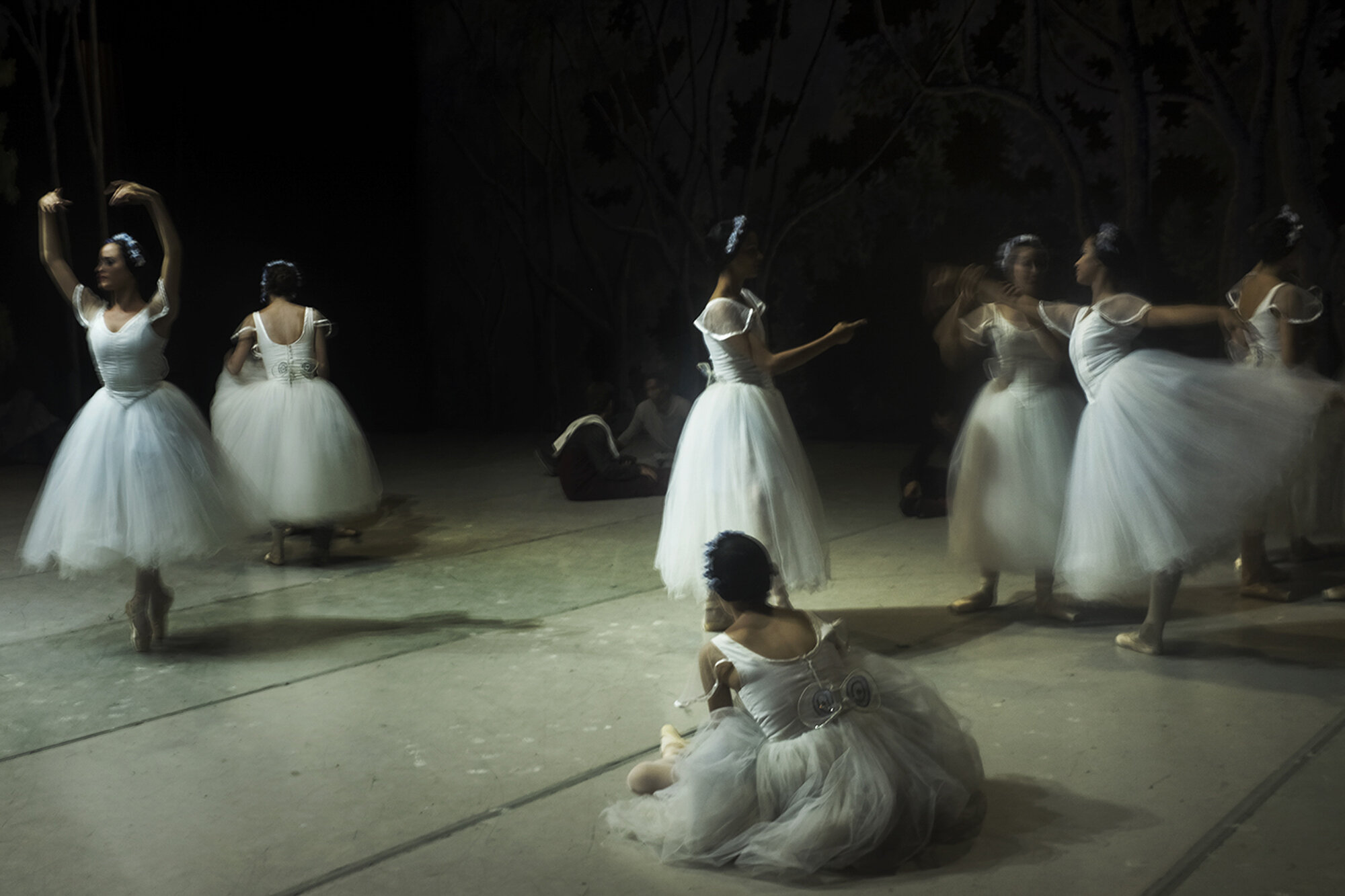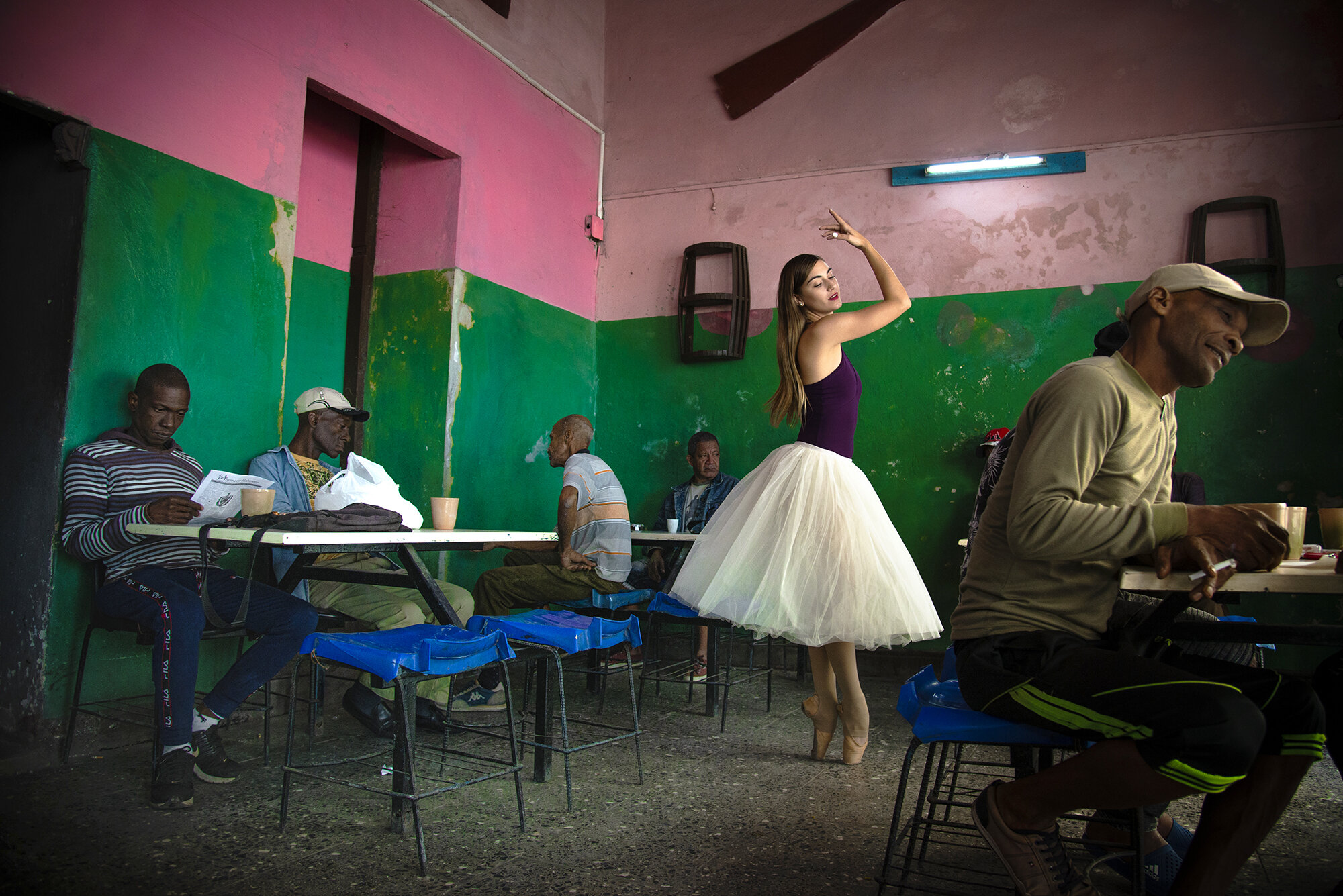My Pas de Deux
“I prefer to make images of ballet dancers in their ‘off-performance’ moments — when they are resting, seeking inspiration off-stage, have their guard down, and are beyond the pursuits of perfection.”
I was always drawn towards dancing as a little girl. I loved to swirl and did several exercises related to ballet without having the faintest idea at the time that they were ballet moves. Like most young girls, I would stand in front of the mirror, but to dance, and sometimes also to act. That said, I never had an opportunity to formally train at a school or even a workshop until I was twelve years old — a little too late to be a ballet dancer.
I spent the first few years of my growing years in a batey (small rural settlement in Cuba), where only about fifty families lived. There was one small school and only a few hours of electricity everyday, thanks to an oil plant that was turned on sparingly. Consequently, any formal ballet was a long shot from there.
I embarked on this personal project when Avril, my daughter, began her studies at the Cuban National Ballet School in Havana. For the uninitiated, it is the largest and some say, the most prestigious ballet institution in the world. So, in a way, Avril’s pursuit of ballet has made my dreams come true as well. I have also enjoyed painting a lot and with a slightly better hand, I would have been a painter. But, I have found my calling as a photographer and through it the means to be plugged into the art world. Edgar Degas has been one of my favorite painters — his pastel work on ballerinas have been a long-time inspiration for me to discover something about the human condition and life of dancers, and people in general.















All images in this gallery © Leysis Quesada Vera
Ballet dancers live a life of much restraint and limitations. They may not always fully grasp their unique world, one which they often enjoy but is also full of disappointment and complexity. Many young ballerinas suffer psychological trauma and most lose a part of their childhood, forced to mature too quickly. It is the price a dancer has to pay for starting a career at nine or ten years of age, while the rest of their peers do so at eighteen. Perhaps for this very reason, when I photograph dancers, I try to make it a fun session for them and not another chore they must do. The shooting process as well as the photographic results have to be an enjoyable time in an otherwise regimented and constrained day.
All images in this gallery © Leysis Quesada Vera (click to enlarge)
As part of my own discovery process with dancers, I try to create a dialog with my subjects, who on many recent occasions have been my daughters on our rooftop terrace or around the neighborhood. My primary interest lies in making images of ballet dancers in their “off-performance” moments — when they are resting, seeking inspiration off-stage, drop their guard down, and are beyond the pursuits of perfection. Like Degas, I too realize that life for these dancers is not without flaws and it is that imperfect candor I seek to portray in my images.
I only shoot stage performance scenes when a dancer or the company asks me to. Those are postcard-perfect, well lit, and poetic frames, yet the dancers are never relaxed and their posed pauses offer a similar photographic opportunity to any photographer present there. I rather prefer to work with my images behind-the-scenes, where the stage is more chaotic, complex, and dramatic, but more importantly also sincere and inherent. I can also be closer to dancers and move in and out of their space to create my own compositions. At the end of it all, I’m looking to make the experience fun and enjoyable for them while capturing a moment of their inspiration. I am immensely moved by the contrast of the dancer’s natural beauty and Havana’s no-holds-barred settings. It is perhaps one of the factors behind what makes dancers here some of the best in the world of ballet.








